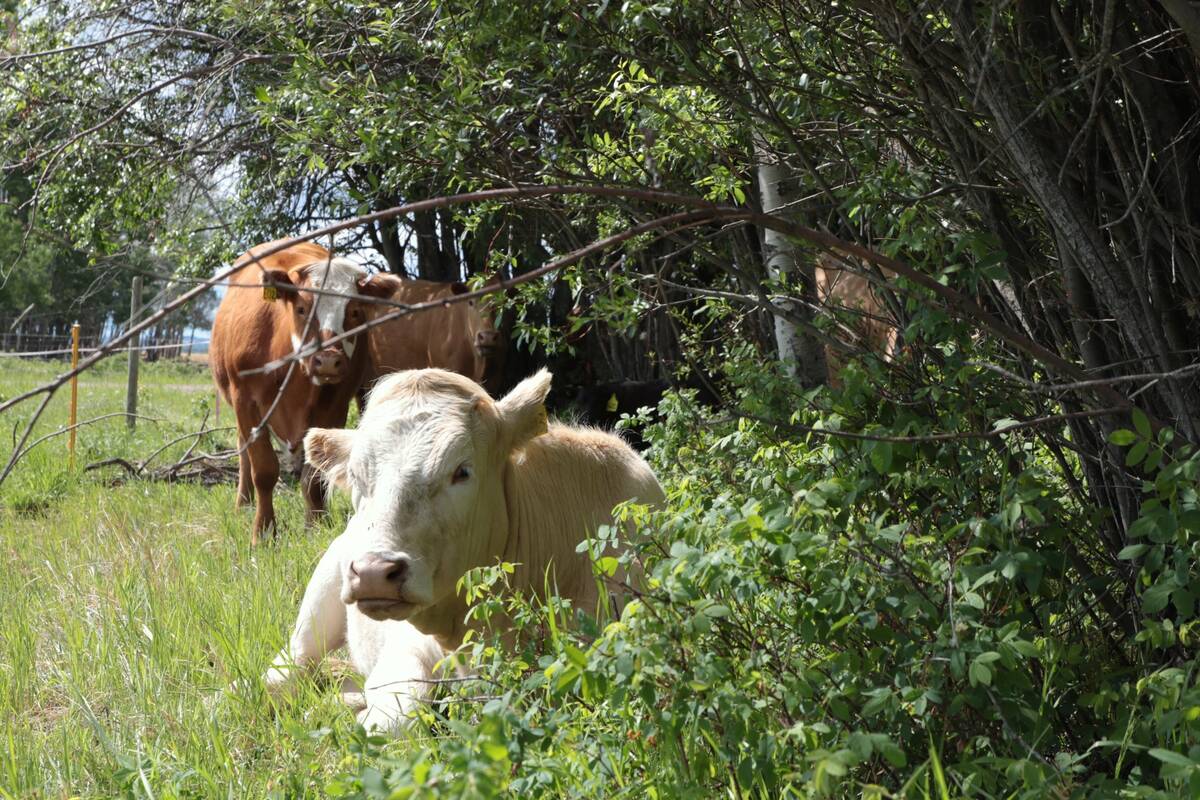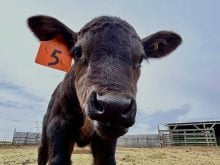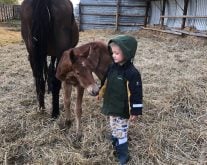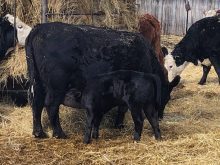Sire selection depends on the producer’s goals, how the offspring will be marketed and/or if heifers will be retained as replacements. The genetics and phenotypical traits of the cow herd will be a factor in trying to select bulls that complement those cows and ultimately produce the best calves possible to meet those goals. Often this involves crossbreeding.
Jordan Thomas, assistant professor and beef cow-calf specialist at the University of Missouri, says the place to start is to determine what those calves actually need to do after weaning.
Terminal calves for beef
Read Also

A best-practices review for your beef cattle herd
Veterinarian Roy Lewis provides a variety of tips on herd health, animal welfare and immunization for western Canadian cow-calf operations, both commercial and purebred.
“If you are retaining ownership on calves through harvest, you will be paid on carcass merit, feedlot performance and other factors,” says Thomas. “If you are selecting sires to produce terminal calves and own them all the way through, you should use some kind of economic selection index such as an economically weighted combination of various EPDs that assigns a value to various traits. These tools can make it simple to start finding the bulls you’d be interested in.”
For terminal calves, this helps find the combination of traits that will produce the most dollars for your investment. If you don’t intend to retain ownership, you may not get paid for carcass merit of calves without some extra effort in marketing; you don’t automatically get compensated for that value, says Thomas.
“If you don’t take time to describe the genetics of your cattle, or become part of a program in which some of that end product value comes back to you, there are many valuable terminal traits that you won’t get paid for, even though you’ve invested in the genetics to produce them.”
If you are shooting for a special market or grass-fed rather than feedlot cattle, you’d select genetics that will enhance performance for the targeted market. “If you can market animals direct to consumers who value that product, it makes sense to emphasize different traits in your sire selection,” says Thomas. “Even if you don’t want to sell beef direct to consumers, there are opportunities today for cattle that are well-suited for grass-finishing systems.”
For example, there may be a co-op or group of producers who participate in a certain branded program. Developing that relationship might enable you to market calves that fit their program genetically and perform well.
“There’s no better competitor to plant-based protein products than grass-finished beef,” he says. “It’s still a minor portion of the beef market, but more than just a niche market.”
For a high-quality grass-finished product and profitable grass-finishing enterprise, producers need to use genetics that work in those systems. It also requires learning how to use their forages appropriately and at proper timing for optimum finishing on grass.
If a person wants to produce calves for this market, this will influence sire selection, to find bulls with genetics for enhanced efficiency and ability to finish quickly on grass. The genetics for a grass-finishing system are a bit different than genetics for feedlot performance.
“There is a different direction you’d want to go, for some traits,” says Thomas. “You might want to produce a smaller carcass, and it can be a challenge identifying cattle that mature quickly and finish at a reasonable age. There are also traits that might be less or more important depending on how that product will be marketed.”
He says marbling is one example. Getting grass-finished cattle to marble well is more challenging because of the biology of putting that lipid into the muscle on lower-energy diets. If the consumer wants a highly marbled product, it might be important to select for that and make sure the cattle are truly finished before harvest. The flip side is that some consumers are not as motivated to seek a highly marbled product and are more interested simply in the fact that the animal was grass-finished.
Producers need to think about where your product is headed, whether a feedlot, grass-finishing system or sale barn. “Producers are compensated differently depending on what they select for and how they market those cattle,” says Thomas.

Creating replacement females
Don’t focus on selecting bulls with terminal traits unless all calves produced will be marketed for meat. For replacement heifers, maternal traits must be considered. “We now have tools to make progress in maternal traits in many breeds,” says Thomas. This is important for people who want to keep their own genetics in the herd and create the best heifers as replacements.
“Some producers focus on the maternal side to produce exceptional females,” he says. They sell bred heifers, young pregnant cows or pairs. These highly productive females bring a premium because other producers know they are maternally selected cattle that will work in their herds.
“Some commercial operations have annual sales where they sell mainly female breeding stock,” says Thomas. “In that case, maternal traits are most important, while weaning weight or carcass merit are less important. We don’t ignore those traits, but the main focus is on the cow and economically relevant maternal traits.”
Maternal traits include early puberty, fertility, calving ease, maintenance energy requirements and longevity — whether they will have a calf every year for a long life of production. Functional structure and adaptation to environment are critical as well. “In cow-calf systems, a big drag on profitability for many commercial operations is how quickly cows fall out of the herd,” says Thomas. “Selling cull cows for low salvage value after just a short time in production is a recipe for extremely high cow depreciation costs associated with every calf.”
Thomas says there is a lot of discussion regarding what makes a good cow. Evaluation of structure is important and will continue to be important, but today producers have many data-driven ways to make selection decisions. Some breeds now provide foot structure and udder score EPDs.
“Udder and teat structure is hugely important,” he says. “A cow might be fertile and a good producer, but if her udder breaks down or her teats become huge by the time she’s five or six years old, she’ll be culled.”
Sometimes with growth or size-related traits, selection depends on how calves will be finished or marketed. But with structural traits, the whole industry can improve, so Thomas says it’s exciting to see some breeds developing EPDs for these traits. When selecting a bull to sire replacement heifers, the maternal and structural EPDs are very important, since daughters of a bull receive some of their genetics from him. For instance, the udders of his daughters are often a lot like his own mother’s udder.
Best of both worlds
Thomas says when selecting for important traits it doesn’t have to an either/or choice to select between maternal or terminal traits. Producers have options. One approach is to specialize as a producer of excellent maternal cattle or produce excellent terminal calves. Another way is to try to make cattle that can do everything — produce animals with good maternal traits as well as feedlot and carcass traits. A person can compromise, with genetics that can do both to some degree.
“Making an exceptional terminal animal for the feedlot involves large body size and ability to readily convert concentrates,” says Thomas. “But these traits are not what you want in a cow if your cow-calf system needs to control feed-related costs.
“One breeding option, whether crossbreeding or straight breeding, is to use AI If we do a fixed-time AI, every cow receives an AI service at the start of the breeding season. Even if only half of the herd gets bred through AI that works. For the AI, we could use a maternal sire, and half our calves would be sired by that maternally-oriented bull. From that half of the herd, it likely means that 25 per cent of our calf crop would be heifers. Those could be replacement candidates,” he explains.
From that early AI breeding program, it means the heifer calves are born early in the calving season and have a head start at being old enough to reach puberty by their first breeding season. The heifers have a good start at being early calvers for the rest of their lives.
“If the remainder of the cow herd is exposed to terminal natural-service bulls, about 50 per cent of the calves are sired by bulls with higher growth — maybe a different breed to capture crossbreeding advantages. This way a person can maintain the breed composition they want for replacement females and use sires whose EPDs and structural qualities fit their maternal goals. But the rest of the calves are terminal calves. We get the best of both worlds, without complicated bull management.”















